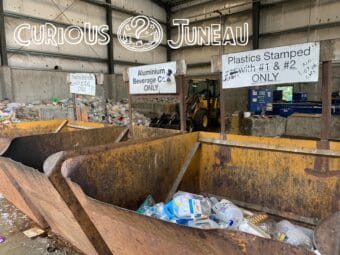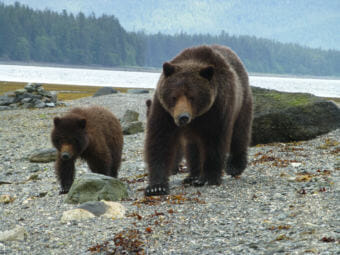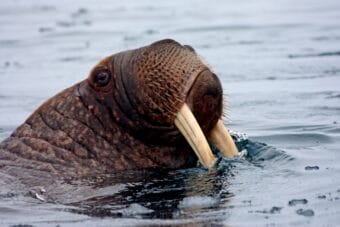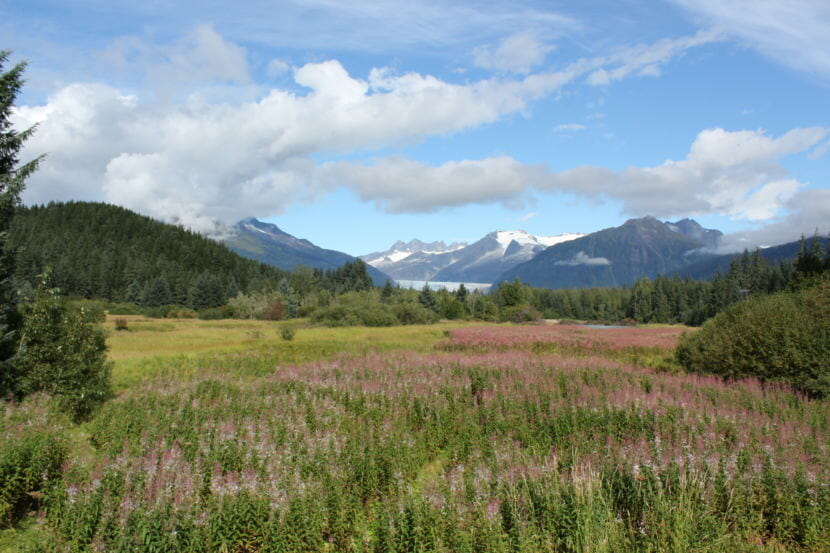
When it comes to invasive species, Southeast Alaska is relatively well off. Non-native plants haven’t overwhelmed the area like in some parts of the lower 48. But the U.S. Forest Service still has to do a lot of weeding, and they’re looking for public input about expanding their efforts.
Right now, the U.S. Forest Service is only authorized to control invasive plant species on limited federal lands. And they say that poses a problem.
“Invasive plants don’t recognize political boundaries,” said Joni Johnson, a botanist with the Forest Service in the Petersburg district. “So if we’re working on controlling invasive plants, it makes sense to cast the net wider so that it includes whole entire islands.”
The Forest Service in the Wrangell and Petersburg management areas is looking to expand their efforts against invasive plant species. That means more area, more tools — and in theory, more collaborations.
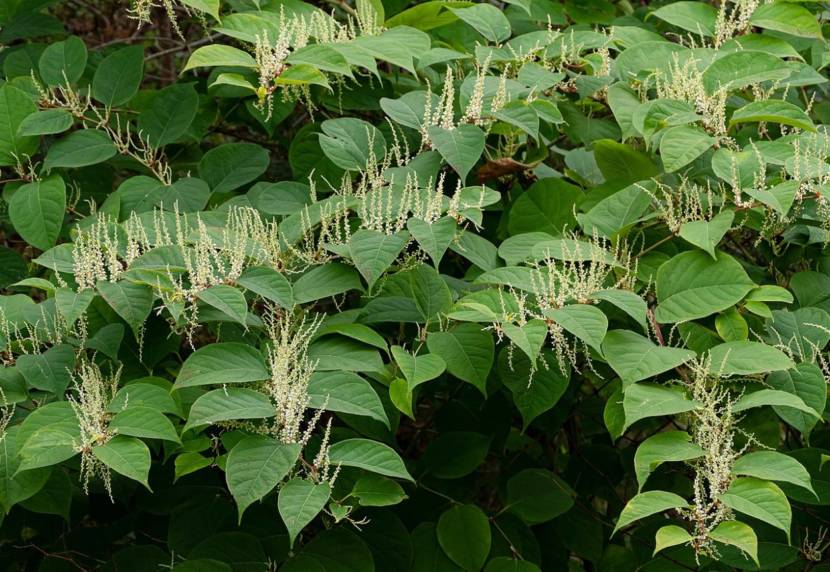
(Courtesy U.S. Forest Service)
The Forest Service’s current invasive plant species work plan is from 2013, and it’s fairly restrictive. For example, the plan doesn’t allow Forest Service workers to disturb invasive species if the roots aren’t on land.
“A great example of how [expanded permissions] would be useful to treat emergent beds would be the Anita Bay road system on Etolin Island. Control efforts for reed canary grass, they’re pretty much 92% effective now, but we have a beaver palustrine system [in the area] that is chock full of reed canary grass,” Johnson said.
A palustrine system is a marshy area.
“If we’re not controlling that [bed of reed canary grass], then there’s two issues: One, riparian condition [the water environment] is impacted. But also, then there’s a seed source for recolonizing and re-infesting,” Johnson said.
The new proposal would let the Forest Service try to stamp out water-based infestations of invasive plant species, which isn’t allowed under the current plan.
Treatment for invasive species in the Tongass varies, depending on the area.
“Wilderness areas, and the objective of maintaining a natural condition have different prioritization checkboxes, so to speak, as opposed to say, the road system on Wrangell Island,” Johnson said.
Up the Stikine River, for example, Johnson says the focus is reed canary grass, a tall, bunchy grass that can grow to nine feet tall and choke out all other plant life in moist-soiled areas around streams, lakes, and wetlands.
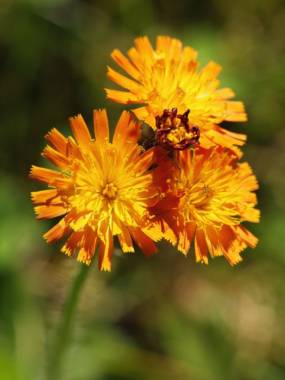
(Courtesy U.S. Forest Service)
In more developed areas, the focus might be the small, orange and yellow-flowered hawkweed, which Johnson says often moves from wilder areas into “human footprints”: roads, trails, and campsites.
Invasive plant species in Tongass National Forest can be traced back to fairly recent history. Some came with settlers and canneries in the early 1900s. Others came in the 1980s and -90s, when clear-cut logging started to cause major erosion in the region. Erosion control seed mixes brought with them an aggressive invader — reed canary grass.
Even so, Johnson said Southeast is “uniquely positioned to stay on top of invasive plants.”
Southeast Alaska has different fire patterns — and less human development — than our neighbors down South. Johnson says the Forest Service wants to get their more aggressive invasive species mitigation plan approved so that they have more ability to detect invasive species populations early.
However, the plan isn’t entirely without concern. The brunt of the Forest Service’s proposed invasive species mitigation relies on herbicides, which have varying effects on soils, native plant life and aquatic environments. The original 2013 work plan saw some pushback about using toxic chemicals. So did the draft version of this proposed plan.
“Herbicides are always going to be an issue, as they should be,” Johnson said. “People are critically evaluating what’s being used and how it’s being used.”
She adds that’s where the public comes in. The Forest Service encourages public comment on the scope and effects of invasive species mitigation. Wrangell’s local tribe will review the proposal at their council meeting on March 9.
Johnson also says she hopes folks will take this comment period as an opportunity to let the Forest Service know where they’re seeing potential areas for treatment and control of invasive species.
“I’m hoping that folks will be more aware especially, say up the Stikine River, noting where they’re seeing reed canary grass, or orange hawkweed, or yellow hawkweed,” she said.
The public comment period for the proposed Wrangell-Petersburg Invasive Plant Management Project opened Friday, March 5. Comments can be dropped off at either the Wrangell or Petersburg Ranger stations, or submitted online. The deadline to comment is April 4.

